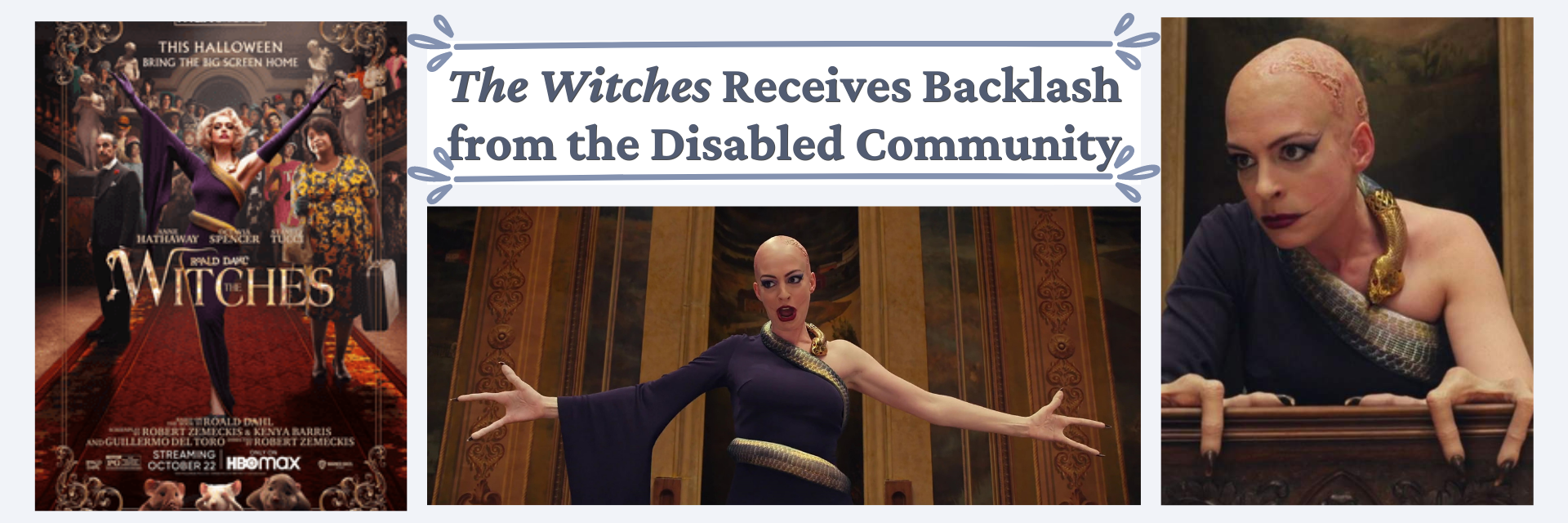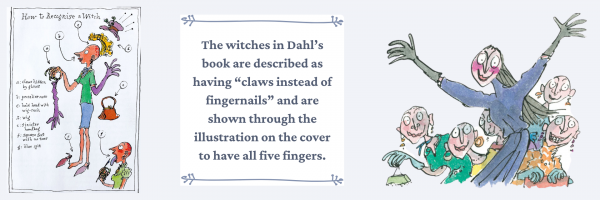
By: Maya Khoury
Directed by Robert Zemeckis, “The Witches” debuted on HBO Max in October making it the second film adaptation of Roald Dahl’s popular children’s book. The story follows a recently orphaned boy who goes to live with his grandmother after the death of his parents. When staying at a hotel with his grandmother, he stumbles upon a gathering of witches and learns of their evil plans and works with his grandmother to stop them. The witches in Dahl’s book are described as having “claws instead of fingernails” and are shown through the illustration on the cover to have all five fingers. However, the film has recently come under fire as many prominent members of the disability community, Paralympians, and other viewers have attested that the distinct physical impairments in the hands in the movie portrayal is offensive to those with limb differences.

In the movie, Anne Hathaway’s character is shown with hands that are similar to those with limb differences. The film’s depiction of the witch specifically shows hands similar to those with ectrodactyly, is an extreme instance of oligodactyly (the presence of fewer than five fingers or toes) where one or more central digits don’t form, resulting in a “claw” shaped hand or foot. Disability advocate Shannon Crossland posted a lengthy message on Instagram where she stated amongst other things, that the depiction of witches in the film was “no way a reflection of the original novel written by Roald Dahl”. She then posits the question, “Is this the kind of message we want the next generation to receive? That having three fingers is a witch’s attribute? It is an extremely damaging portrayal. Disability should NOT be associated with evil, abnormality, disgust, fear or monsters”.
This brings us to the point of discussion: the villainization of disability and more specifically, its harmful implications on society. Amy Marren, British English Paralympic swimmer made a statement on Twitter where she asserted, “Yes, I am fully aware that this is a film, and these are witches, but witches are essentially monsters. My fear is that children will watch this film, unaware that it massively exaggerates Roald Dahl’s original and that limb differences begin to be feared”. Following that, the Paralympic Games official account retweeted Marren’s original tweet with the following statement: Limb differences should be celebrated and disability has to be normalised. Paratriathlon world champion Claire Cashmore has also commented that the promotional images for the film brought back bad memories from her childhood as she would hear hurtful comments as “your arm is so scary” or “ your arm makes me feel sick”. Cashmere wrote, “Seeing this picture from ‘The Witches' film made me very confused and upset. We want disabilities to be normalized and represented in a positive light rather than being associated with being a scary, evil, witch”. Here we see a few individuals, likely of many, to find the villainizing of disability to be harmful and offensive.
Anne Hathaway has taken to Instagram to release an official apology, where she posts a video on behalf of the Lucky Fin organization, a non-profit aimed to raise awareness and celebrate those born with limb differences, with the following caption:
Big thanks to the @Lucky_Fin_Project for allowing me to use this video.
I have recently learned that many people with limb differences, especially children, are in pain because of the portrayal of the Grand High Witch in The Witches.
Let me begin by saying I do my best to be sensitive to the feelings and experiences of others not out of some scrambling PC fear, but because not hurting others seems like a basic level of decency we should all be striving for. As someone who really believes in inclusivity and really, really detests cruelty, I owe you all an apology for the pain caused. I am sorry. I did not connect limb difference with the GHW when the look of the character was brought to me; if I had, I assure you this never would have happened.
I particularly want to say I’m sorry to kids with limb differences: now that I know better I promise I’ll do better. And I owe a special apology to everyone who loves you as fiercely as I love my own kids: I’m sorry I let your family down.
If you aren’t already familiar, please check out the @Lucky_Fin_Project (video above) and the #NotAWitch hashtag to get a more inclusive and necessary perspective on limb difference.

Check out the #NotAWitch on Twitter and Instagram to see what others have to say about the film’s representation of witches.

Originally Posted: 21 November 2020

